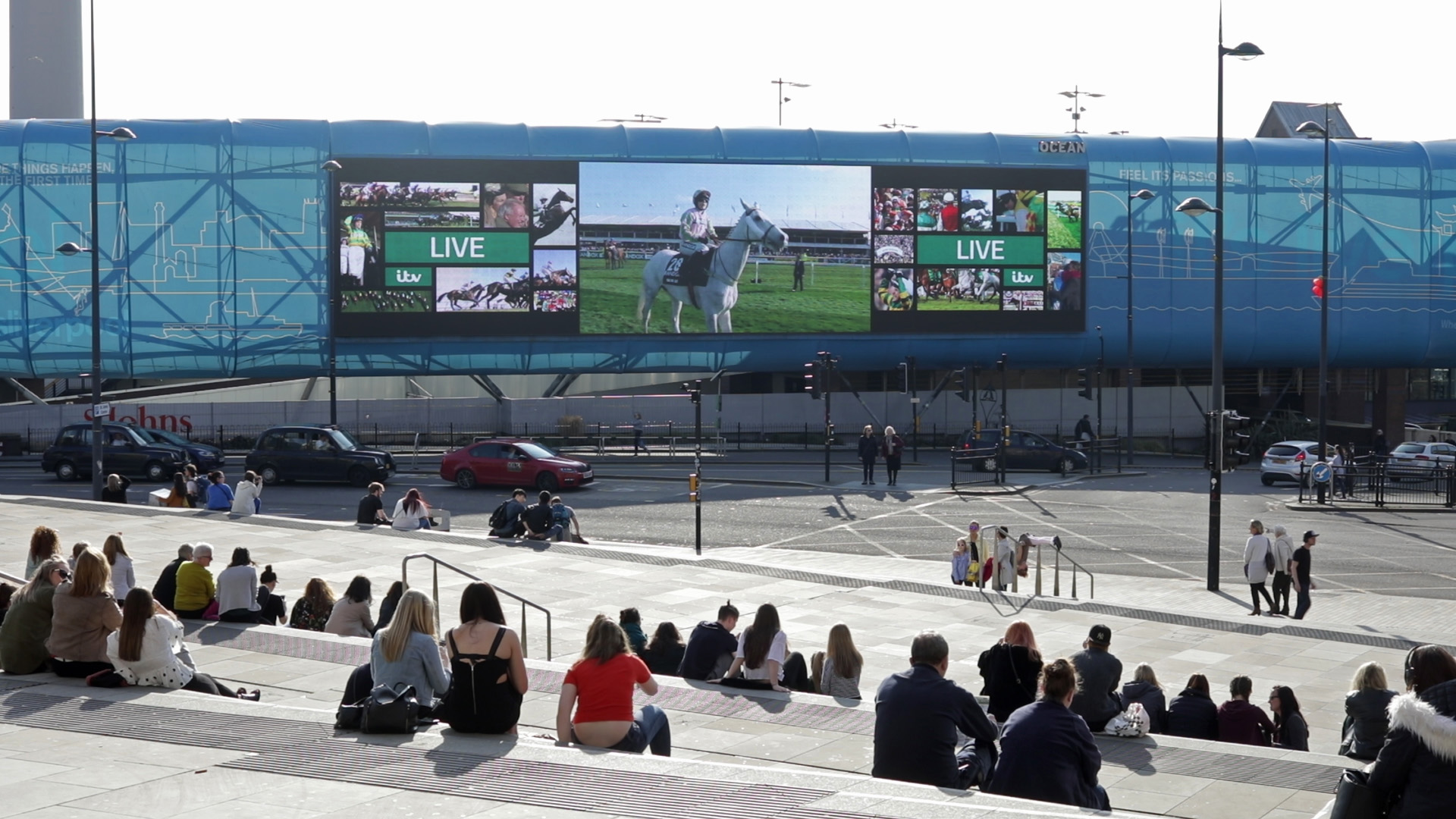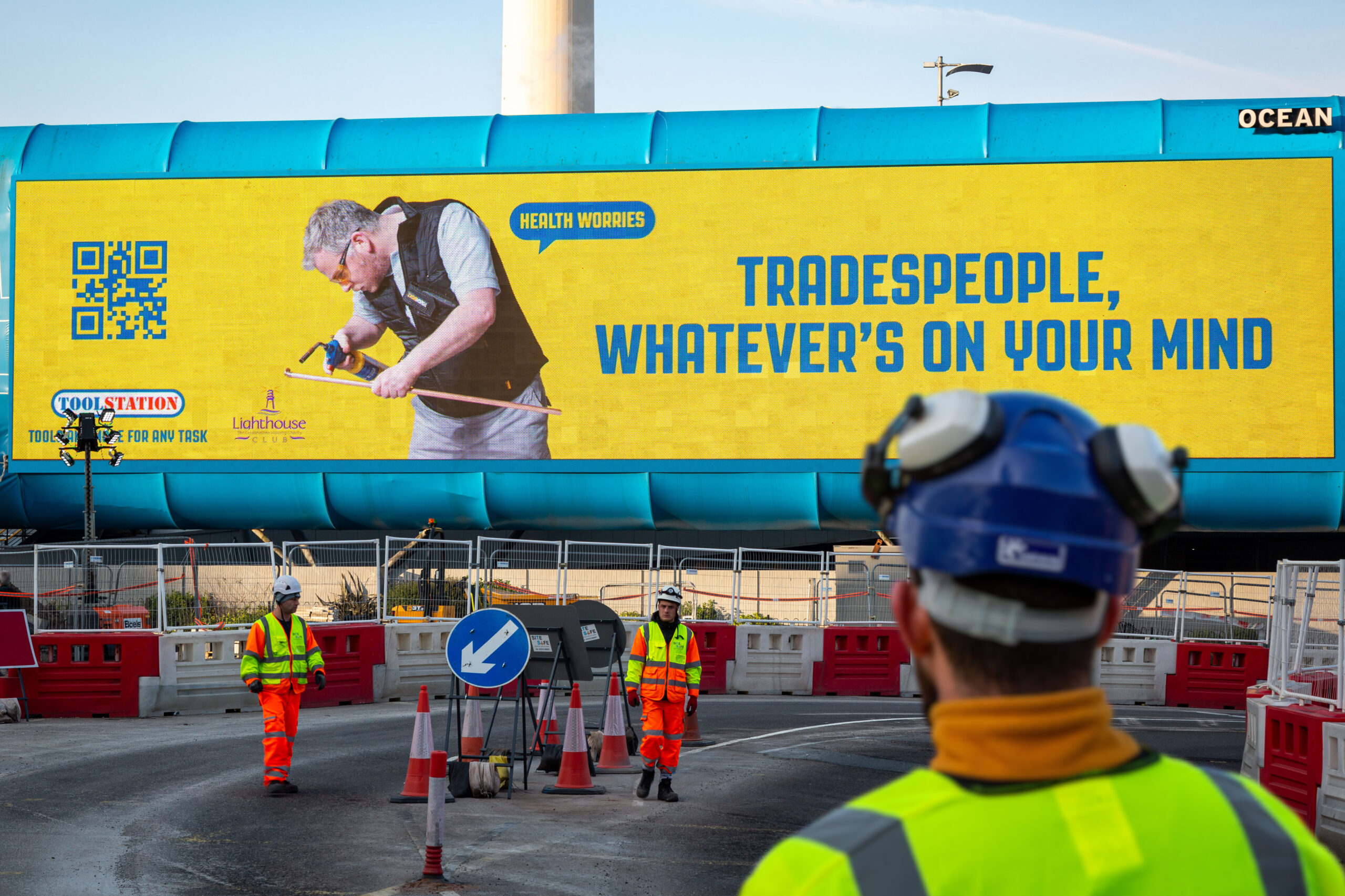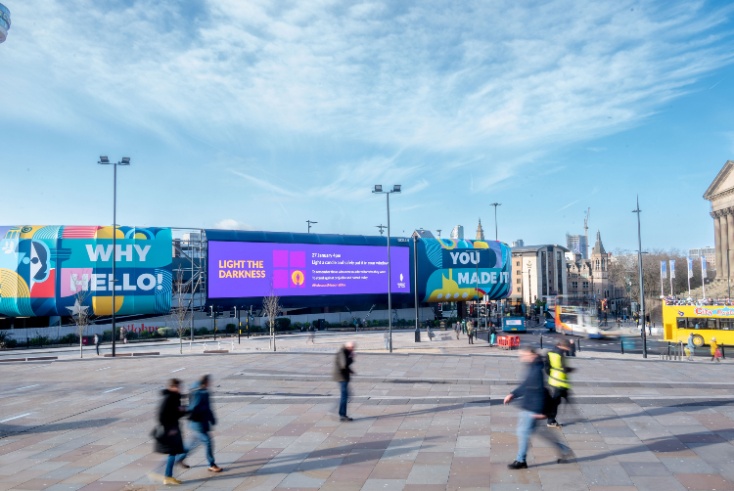The Media Leader Interview
As Ocean Outdoor UK marks 15 years since its first full motion large format digital screen, its UK CEO Phil Hall discusses what’s in store for the next 15 years.
This month the Liverpool Media Wall (LMW), the 30m long and nearly 7m wide full motion digital screen which greets people outside Liverpool Lime Street, marks its 15th anniversary.
The large format screen reaches more than one million people a fortnight, and has seen the likes of Stormzy, Usain Bolt and Kermit the Frog grace its pixels, along with events like Eurovision and the Grand National, and poignant tributes to key workers during the pandemic, Remembrance Day, Holocaust Memorial Day and, last year, the 30th anniversary of the Hillsborough Disaster.
It is Ocean Outdoor’s first large format full motion digital screen, with Coca-Cola appearing as one of its first advertisers in 2008, coinciding with Liverpool being chosen as the European Capital of Culture that year.
The LMW is a facade on St John’s shopping centre and became a permanent fixture in 2013 after a £1m smart technology upgrade to improve its running costs and power usage, and in 2022 it had another £1m upgrade to bring in DeepScreen technology to enable brands to use experiential and immersive events and games, and 3D and AR displays.
Ocean now has 43 full motion large format digital screens across 11 cities, reaching 120 million adults fortnightly, with additional full motion large format screens in three new cities on the horizon with a focus on those being DeepScreen compatible, as well as in a prime location.
 While not making up the majority of its inventory, they are “the jewels in the crown”, says Phil Hall (pictured, left), Ocean Outdoor UK CEO, and, for him, encapsulate what out-of-home is all about — talking to all different people in a city in the same tone at the same time.
While not making up the majority of its inventory, they are “the jewels in the crown”, says Phil Hall (pictured, left), Ocean Outdoor UK CEO, and, for him, encapsulate what out-of-home is all about — talking to all different people in a city in the same tone at the same time.
OOH has been on a rapid journey over the last few years, as Hall explains to The Media Leader: “When you look at out-of-home now it’s easy to forget just how far and how fast the technology has come. The fact that it is only 15 years since we had our first large format full motion screen, and now whether you look at our business or around the UK and wider world, you see a lot of big format full motion digital screens and this has just become a part of our life over a relatively short time.”
This widespread proliferation of full motion large format screens has led to “a shot forward” in digital out-of-home creative, especially over the last five to six years, according to Hall.
However, Hall stresses that while full motion large format’s primary purpose is as a vehicle for advertising, and something it is very effective at, it is important to show different sorts of content that are more relevant to the surroundings as well.
“If you’re out and about in your city, you have no choice, you’re going to see those adverts. Those adverts are unmissable and therefore I think that out-of-home has a real responsibility that it has grasped in terms of making those screens and the messages relevant and appealing to people as they go past.”
Ocean has done five studies with Neuroscience to track the engagement across its different screens. The latest research found that adding advertising on full motion screens around content or information, like events such as the Olympics or a concert, garner the highest engagement of all, compared to only advertising on static or full motion OOH on their own or combined.
Creativity and technology will be at the heart of OOH’s future
For Hall, the future will bring in more “seamless” interactions with OOH screens, carbon efficiency, and social engagement.
He thinks that what will be possible through a screen will “grow exponentially” in 15 years, as technology in the last 15 years has come on “leaps and bounds” with more interactivity, livestreaming, targeting and more made possible.
“At the heart of it, creativity and technology would be the two big things,” he says. “This causality that we’ve demonstrated between out-of-home and mobile is going to get stronger and stronger. I suspect that it’ll be very, very easy in future to walk past any digital out-of-home screen, see something that you like and think is relevant, wave your phone at it and that’s it.”
This will not be through the current technology of QR codes, and will be overall easier for brands to engage with with consumers.
Hall remarks: “This is where personalisation and digital OOH becoming a one-to-many medium and a one-to-one medium in the future can take off.”

‘Definitely a lot more to do’ on OOH carbon load
Hall also says there are increasing questions from the buyside about the sustainability of OOH, which is something the whole industry is trying to tackle throughout their supply chain.
This will need increasing attention and investment as they are all still “trying to crack the third stage”, namely the procurement and shipping of screens from abroad, but progress has been made in terms of running on sustainable power, helping rewild screen surroundings and using other more sustainable materials.
“Digital out-of-home is a carbon efficient way to reach people. We get a lot of questions from clients in the buy side, quite rightly, about out-of-home and how carbon efficient is, and I’d say the answer at the moment is we’re in a pretty good place, but there’s definitely a lot more to do.”
Talking to people “beyond the screen”
At Ocean at the moment Hall says there are a lot of conversations about not just the physical OOH screens, but where people go after they see a screen, whether that’s online or into the Metaverse for example.
In future through an overlay of sophistication and technology on OOH’s power as a democratic medium, there will be more ways of talking to people “beyond the screen”.
“It all starts with the screen, but it doesn’t necessarily end with the screen, whereas, 10- 15 years ago, you saw the message, that was your impression registered, off you go about your daily life and you feel a little bit better about Heinz beans or Ford cars, whatever it might be. I think that now out-of-home can go a lot deeper.”

Adwanted UK is the trusted delivery partner for three essential services which deliver accountability, standardisation, and audience data for the out-of-home industry.
Playout is Outsmart’s new system to centralise and standardise playout reporting data across all outdoor media owners in the UK.
SPACE is the industry’s comprehensive inventory database delivered through a collaboration between IPAO and Outsmart.
The RouteAPI is a SaaS solution which delivers the ooh industry’s audience data quickly and simply into clients’ systems.
Contact us for more information on SPACE, J-ET, Audiotrack or our data engines.






 While not making up the majority of its inventory, they are “the jewels in the crown”, says Phil Hall (pictured, left), Ocean Outdoor UK CEO, and, for him, encapsulate what out-of-home is all about — talking to all different people in a city in the same tone at the same time.
While not making up the majority of its inventory, they are “the jewels in the crown”, says Phil Hall (pictured, left), Ocean Outdoor UK CEO, and, for him, encapsulate what out-of-home is all about — talking to all different people in a city in the same tone at the same time.
